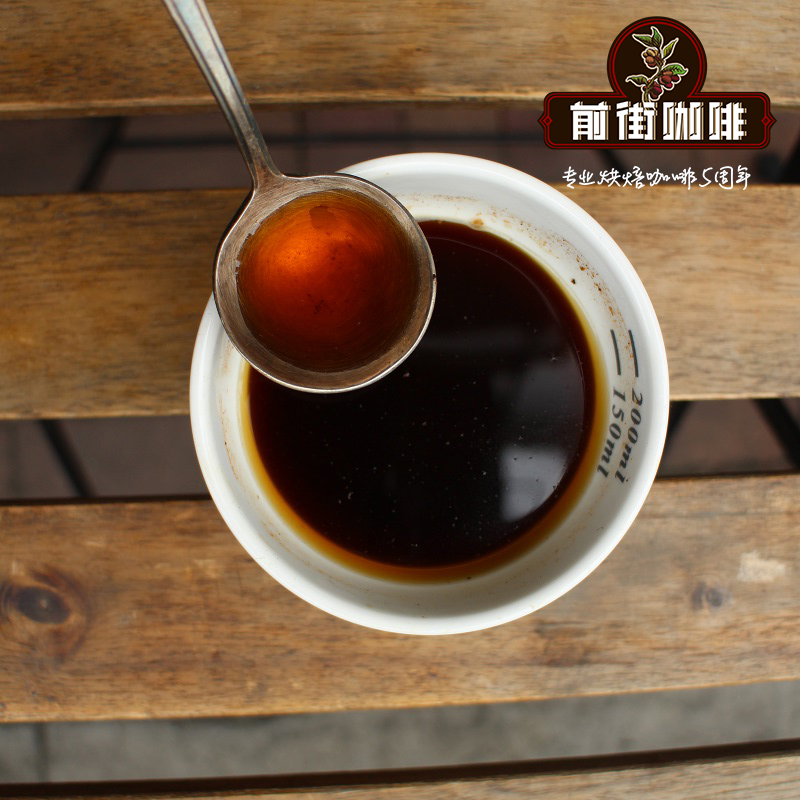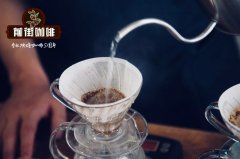The Flavor of anaerobic fermented Coffee beans anaerobic treatment Coffee beans taste good? anaerobic fermented coffee acidity

Professional coffee knowledge exchange More coffee bean information Please pay attention to coffee workshop (Weixin Official Accounts cafe_style)
Dry fermentation and flavor profile
"We pulp the parchment and put it in a pool of concrete," Sasa said. "This fermentation will help stimulate the sweetness, chocolate and fruit flavors of coffee."
But it also presents a challenge: controlling the temperature. Since temperature affects fermentation speed, Sasa explains that it negatively affects consistency and flavor.
"On the left," he continued,"we fermented at an average temperature of 16°C for 24 hours. This coffee tastes good, it's good, it's balanced.
"In the graph on the right, we also fermented for 24 hours, but at 26°C, which is 10°C more. Then he pointed to the pink on the beans. "This happens when we spend too much time fermenting coffee and the acidity of the alcohol starts to dominate the fermentation." It brings a vinegar-like smell, as well as a dry, metallic smell."
Wet fermentation and flavor profile
You will hear wet fermentation described as double washing, double fermentation, Kenyan washing, etc. This is common in East Africa, which is known for its cleanliness. But Sasa explains that it adds more cups.
"We ground the cherries into pulp and soaked the parchment in water. Water will help prolong fermentation time and will result in a softer body, complex acidity, and a more refined taste,"he explained.
More data, better coffee.
Sasa was one of several industry leaders who experimented with treatment methods, from his new ice treatment method (details of which were kept secret until his book was published) to his famous carbonization impregnation method.
With little research to do in the coffee industry, he turned to wine and beer. "One person in particular, helped me, inspired me," he said. "His name is Tim Kirk and he owns Clonakilla Winery, a beautiful winery located near my home in Canberra.
"When I first visited Tim, I was impressed with his design. He knows exactly how much rain falls in his vineyard, and how the temperature of the wind affects the taste of the wine. I think it's funny. I've never seen anyone who has such a thorough understanding of climate and its impact on products."
But Tim not only understands the effects of climate, he controls it.
"Tim controls the temperature and humidity of the fermentation environment. He explained to me that his wine could produce different flavors at different temperatures and times.
He uses double-insulated stainless steel containers to increase transparency of fermentation. pH, alcohol and carbon dioxide are all monitored and recorded to make sure he gets the concentration he wants."
It was this data-driven approach that prompted Sasa to change the way he handled coffee.
END
Important Notice :
前街咖啡 FrontStreet Coffee has moved to new addredd:
FrontStreet Coffee Address: 315,Donghua East Road,GuangZhou
Tel:020 38364473
- Prev

Coffee fermentation what does coffee bean fermentation mean? is coffee bean fermentation necessary?
Professional coffee knowledge exchange more coffee bean information please follow the coffee workshop (Wechat official account cafe_style) Why are we talking about fermentation? The firm thing about Sasa is that we know very little about fermentation, but it is very important. At Re;co, he said, when I travel around the world, taste coffee, do processing experiments with more than 50 producers, and also on my farm, I realize
- Next

Costa Rica las lomas estate coffee introduction Costa Rica coffee estate recommended
Costa Rica Naranjo Las Lomas San Juanillo Flavors Lime Orange, Sweet Peach, Grapefruit Regions Similar to Napa Valley or Burgundy wine regions, coffee growing regions can tell us a lot about coffee
Related
- Beginners will see the "Coffee pull flower" guide!
- What is the difference between ice blog purified milk and ordinary milk coffee?
- Why is the Philippines the largest producer of crops in Liberia?
- For coffee extraction, should the fine powder be retained?
- How does extracted espresso fill pressed powder? How much strength does it take to press the powder?
- How to make jasmine cold extract coffee? Is the jasmine + latte good?
- Will this little toy really make the coffee taste better? How does Lily Drip affect coffee extraction?
- Will the action of slapping the filter cup also affect coffee extraction?
- What's the difference between powder-to-water ratio and powder-to-liquid ratio?
- What is the Ethiopian local species? What does it have to do with Heirloom native species?

